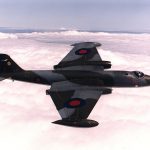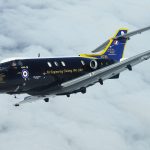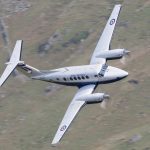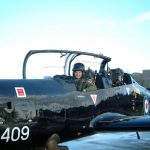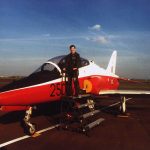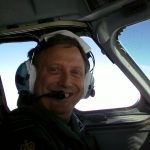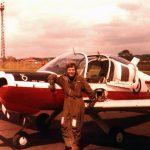Use of the autopilot during the IRT is limited by examiners as outlined in Standards Document 1. The relevant section (3.6.14) reads as follows:
Where aircraft are fitted with a flight director and/or autopilot and the equipment is intended to be used during the flight, the applicant will be expected to carry out the necessary pre-flight checks to establish serviceability. The equipment must be operated in accordance with any limitations in the AFM/POH. Electric trim system may be used as prescribed by the AFM/POH and should also be tested.
Altitude alerting systems and speed bugs are permitted. Use of autopilot and flight director is permitted after departure and after achieving straight and level, trimmed, cruise flight en-route at the planned or assigned cruising level to the next waypoint.
Permitted modes are Roll, Heading, Altitude and Vertical Speed. Tracking by using a NAV mode is not permitted. The examiner will indicate when autopilot and FD use is permitted and when it must be discontinued.
As the only Seneca V autopilot modes permitted for use during the IRT are ROLL, HDG, ALT and VS, it is mandatory that all are tested before flight. Unfortunately, both the POH and SOPs omit a test of the ALT mode; however, the check exists in the S-TEC55X Pilot’s Guide. Therefore, the procedure published on the Autopilot Test page of this website sticks more rigidly to the S-TEC55X Pilot’s Guide and includes a test of all three modes. Whilst the PA34 autopilot does not have a ROLL mode, the Control Wheel Steering (CWS) mode is a close equivalent as it allows you to command the autopilot to maintain a selected bank angle and vertical speed; therefore the CWS mode should be tested as well.
The examiners will usually require you to perform at least one manually flown level-off from a climb and another from a descent. So unless briefed otherwise by the examiner, you may engage the autopilot once you have leveled off in straight flight and stabilized at 140kts with 2200RPM set, the mixture leaned and the aircraft in trim. Expect the examiner to tell you to disconnect the autopilot in time for him/her to see you perform a manually flown level-off from a descent when arriving at your first destination.

Straight and Level Flight
To engage the autopilot to fly Straight and Level, carry out the following actions in sequence:
- PFD Heading Bug Selector – Press
Heading bug moves to present aircraft heading - Autopilot HDG button – Press
Heading mode is engaged
PFD Autopilot Status bar displays
AP HDG - Autopilot ALT button – Press
Altitude mode is engaged
Note – ALT Mode will not engage unless HDG mode is already engaged
Flight Director Command Bars appear
PFD Autopilot Status bar displays
AP HDG ALT
Small Altitude Changes
The captured altitude may be modified for small errors, such as barometric pressure changes, by rotating the VS Modifier Knob either clockwise (CW) for an increase in altitude, or counter-clockwise (CCW) for a decrease in altitude.
Each detente of the knob equals 20 feet, and the range is ±360 feet from the original captured altitude.
En-Route Climb
To perform an en-route climb using the autopilot carry out the following actions:
- Required Altitude or Flight Level – Set
Set PFD Reference Altitude to the new required altitude/level.
Ensure the Barometric Setting is correctly set to QNH or STD BARO as required.
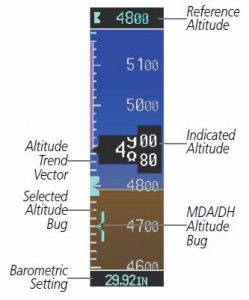
- Autopilot VS button – Press and HOLD
Selects the VS Mode
AP HDG VS - Autopilot ALT button – Press
With the VS button pressed, pressing the ALT button arms the autopilot to level off at the selected Reference Altitude.
AP HDG ALT VS
- Autopilot VS button – Release
- Autopilot VS Modifier Knob – Rotate Clockwise to set 1200 ft/min Climb
The FD Command Bars will pitch up, the aircraft will start to climb and IAS reduce. - Climb Power – Set
Set Mixtures Rich, 2500 RPM and 32″ MAP.
IAS will be reducing whilst you do this, but will stabilize at about 110 kts once Climb Power is set. - Autopilot VS Modifier Knob – Rotate as required
Monitor airspeed and adjust the autopilot rate of climb as necessary to maintain 110 kt.
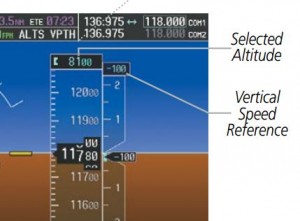
Vertical Speed Reference will indicate selected rate of descent. - 1000 ft To Go – Confirm Level-off Altitude/Level

Selected Altitude will change to black text on a light blue background and flash for five seconds. - 200 ft To Go – Confirm ALT mode is Armed (White)
AP HDG ALT VS
Aural Warning sounds.
Selected Altitude will change to light blue text on a black background and flash for five seconds.
Vertical Speed Reference starts to reduce as the aircraft begins to pitch down toward level flight.
VS Modifier Knob becomes disabled.
Be ready to disconnect autopilot if it fails to level off correctly. - Top of Climb – Accelerate to Cruising Speed
Confirm Altitude Mode is captured.
AP HDG ALT
Carry out the Top of Climb Checks.
En-Route Descent
To perform an en-route descent using the autopilot carry out the following actions:
- Required Altitude or Flight Level – Set
Set PFD Reference Altitude to the new required altitude/level.
Ensure the Barometric Setting is correctly set to QNH or STD BARO as required.

- Autopilot VS button – Press and HOLD
Selects the VS Mode
AP HDG VS - Autopilot ALT button – Press
With the VS button pressed, pressing the ALT button arms the autopilot to level off at the selected Reference Altitude.
AP HDG ALT VS
- Autopilot VS button – Release
- Autopilot VS Modifier Knob – Rotate Anti-Clockwise to set 1200 ft/min Descent
The FD Command Bars will pitch nose down and the aircraft will start to descend quite quickly, so place your right hand on the throttles as you do this. - Descent Power – Set
Set 17″ MAP.
Reduce the power promptly to avoid exceeding 140 kts in the descent. - Autopilot VS Modifier Knob – Rotate as required
Monitor airspeed and adjust the autopilot rate of descent as necessary to maintain 140 kt.

Vertical Speed Reference will indicate selected rate of descent. - 1000 ft To Go – Confirm Level-off Altitude/Level

Selected Altitude will change to black text on a light blue background and flash for five seconds. - 200 ft To Go – Confirm ALT mode is Armed (White)
AP HDG ALT VS
Aural Warning sounds.
Selected Altitude will change to light blue text on a black background and flash for five seconds.
Vertical Speed Reference starts to reduce as the aircraft begins to pitch up toward level flight.
VS Modifier Knob becomes disabled.
As the aircraft levels-off it will slow down if extra power is not applied.
Increase the MAP as required to maintain your desired IAS.
Be ready to disconnect autopilot if it fails to level off correctly. - Bottom of Descent – Adjust to Required Airspeed
Confirm Altitude Mode is captured.
AP HDG ALT

